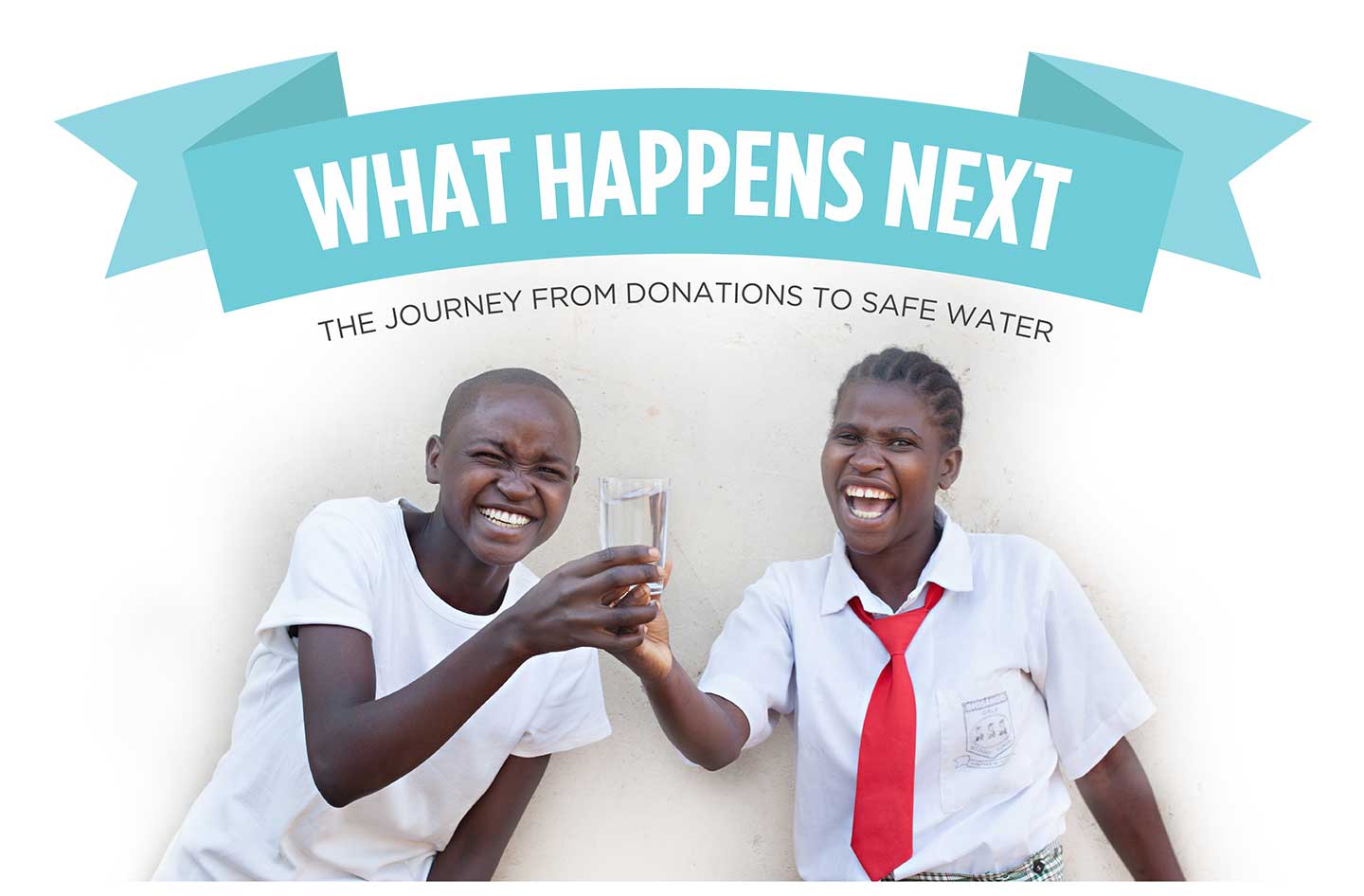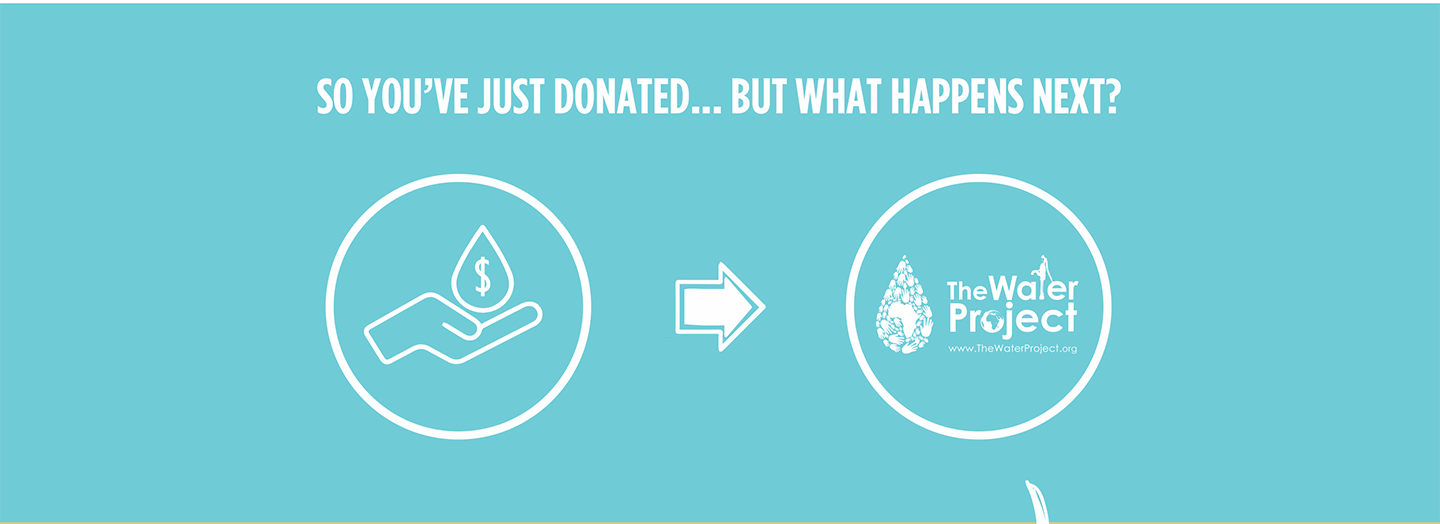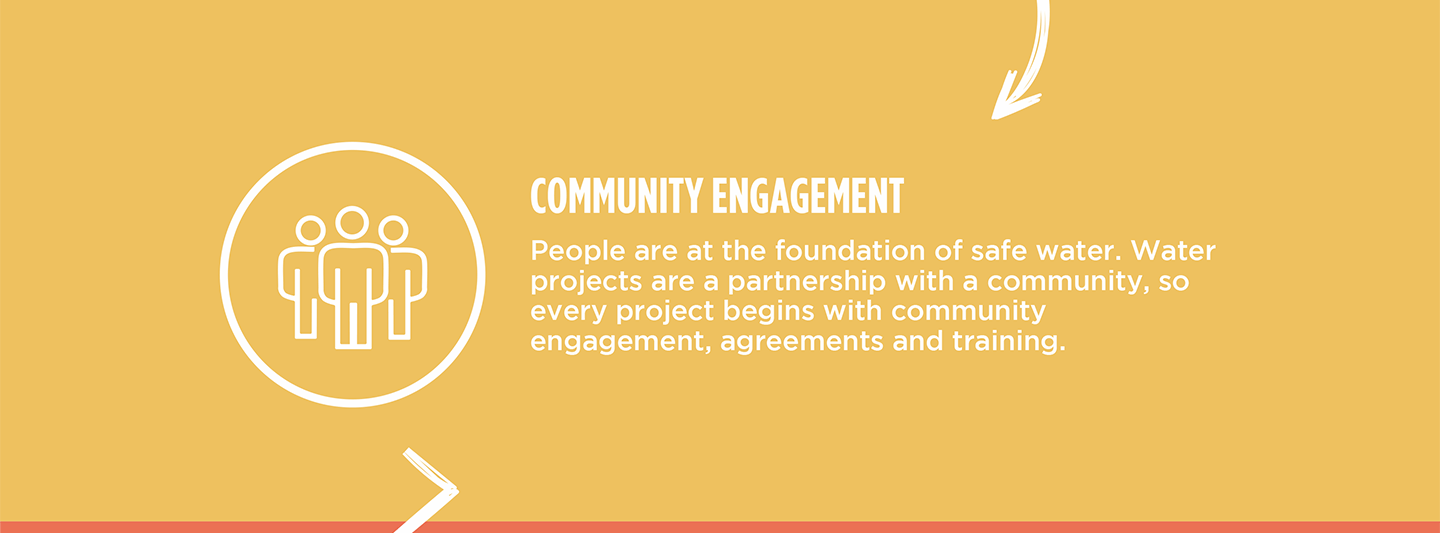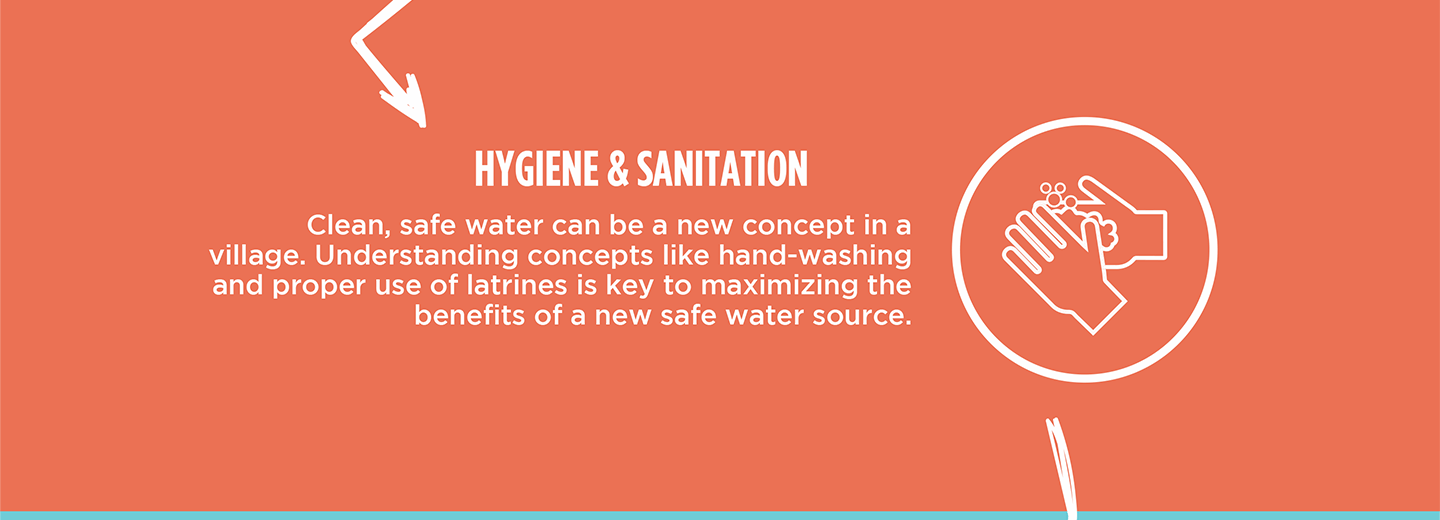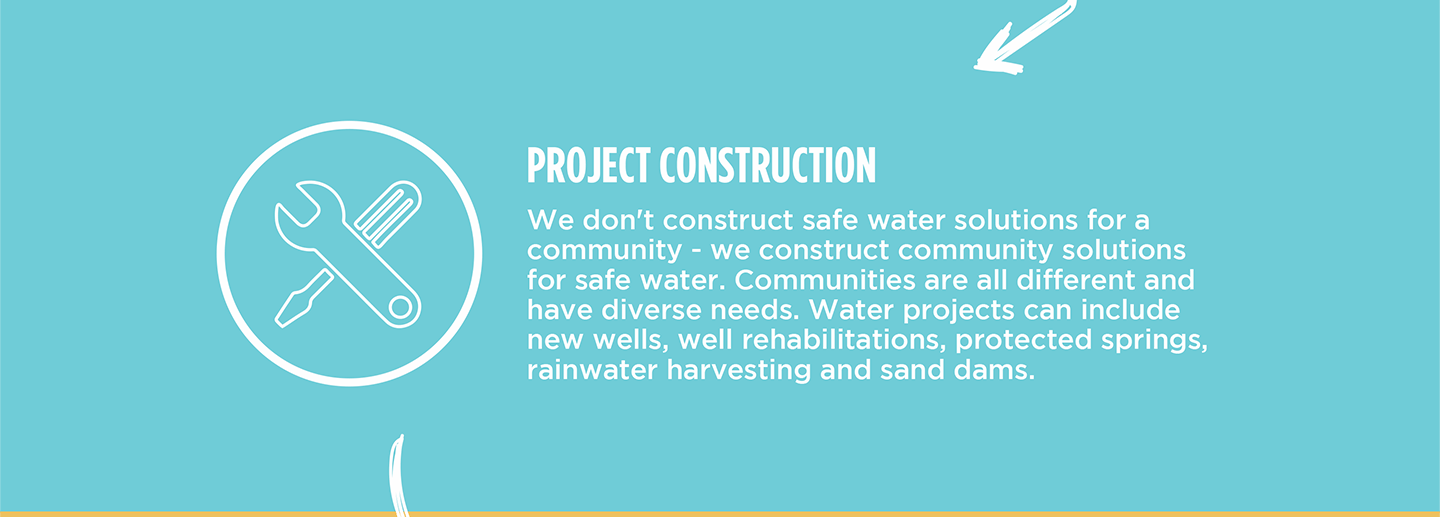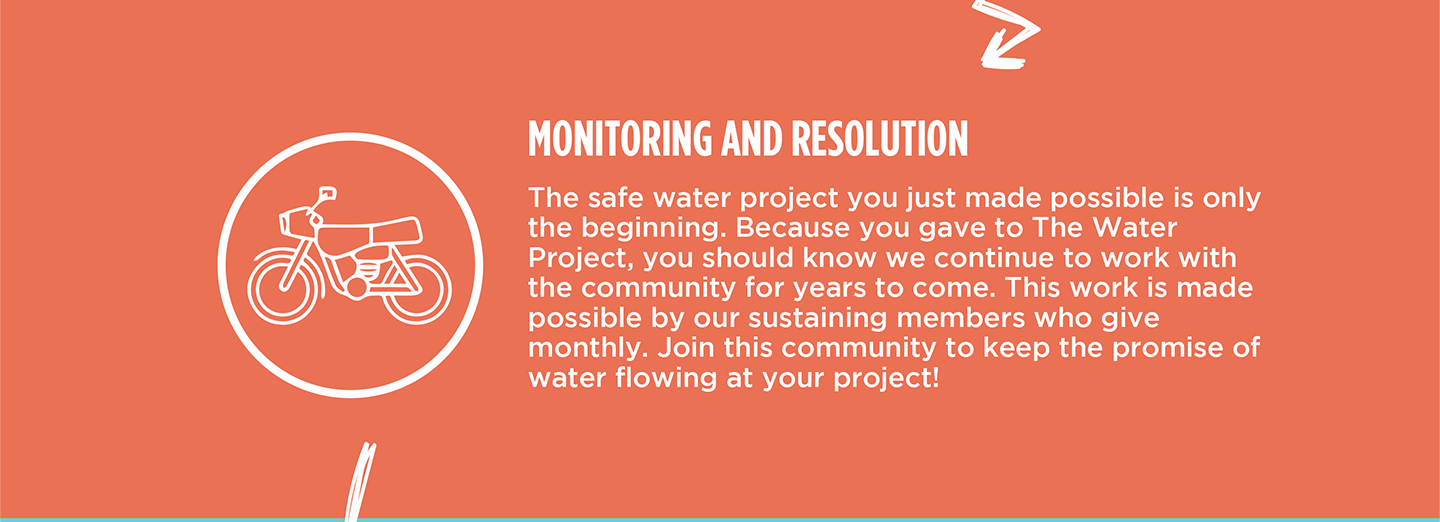The Gamalenga Secondary School has 403 students and 29 staff members who experience water shortages most of the year. Their rain tank is too small to store up enough water during the rainy season, so during the dry months, they are left with no other option but to haul water from home, and there is hardly ever enough transported in one trip.
Even when the rainwater harvesting tanks have something to offer, they create overcrowding and frustration at the water points.

Students crowd the waterpoint.
Stacy is sixteen, and she is all too familiar with the struggle for sufficient water.
"As a girl child, water means everything to me, and it is my responsibility to go fetch water when needed," she said.

Stacy.
Aware of her responsibility, Stacy does her duty, but what she sacrifices daily could cost her future. She spends so much wasted time waiting for her turn to collect water or walking all the way home to get water that she spends less and less time in the classroom. And she's not alone.
"I waste a lot of time queuing for water, and at the end of the day, I fail to study for my exams, thus affecting my exam score," Stacy reflected.
It's not just her education that takes a back seat in the heat of the water crisis; it's her personal care and, thus, her confidence.
"I feel bad because, when I get home from school, my uniform is dirty and there's no water, [so] it becomes difficult for me to wash my clothes," lamented Stacy.

Students leave the campus in search of water.
The challenges ripple far beyond Stacy’s daily routine. Every missed lesson, every exam not properly prepared for, and every day without clean clothes chips away at the potential of hundreds of students just like her. Teachers, too, struggle as their ability to guide and inspire is weighed down by the lack of reliable water.
She has big plans for her future. "I want to become a doctor so that I can treat and help people to fully understand the importance of clean water," shared Stacy.
Without safe and accessible water, the school community remains trapped in a cycle of lost time, frustration, and limited opportunity. Dreams—like Stacy’s vision of becoming a doctor—become harder to achieve when so much energy is spent on the basic task of fetching water.
But there is hope. With a sustainable water supply on school grounds, students would spend less time queuing and more time learning. Teachers could focus on education instead of managing water scarcity. And girls like Stacy could pursue their ambitions with dignity, confidence, and health intact.
Water is more than just a drink—it is the foundation of education, opportunity, and a brighter future. For Gamalenga Secondary, access to clean water is the key to unlocking that future.
Steps Toward a Solution
Schools without reliable, on-premises water access often rely on students to fetch and carry water, leading to rationing and uncertainty about water quality. The water is typically poured into a communal storage tank and used by the entire school. With children carrying water from all different sources, it is also impossible for teachers and staff to know exactly where the water comes from and how safe it is to drink.
A new water point will be located on-premises at the school to ensure accessibility, reliability, and safety for students, teachers, and staff while meeting our school coverage goals. Having water available at the school allows children to drink, wash hands, and use sanitation facilities without leaving school grounds, preventing disruptions to lessons and reducing safety risks. A dedicated source increases water availability, reduces reliance on stored water, minimizes rationing, and ensures confidence in the safety of the water. This means staff and students are healthier, and their lessons aren’t disrupted, contributing to a better education!
Our technical experts worked with the school leadership and local community to identify the most effective solution to their water crisis. They decided to drill a borehole well, construct a platform for the well, and attach a hand pump.
Well
Abundant water often lies just beneath our feet. Aquifers—natural underground rivers—flow through layers of sediment and rock, offering a constant supply of safe water. A borehole well is drilled deep into the earth to access this naturally filtered and protected water. We penetrate meters, sometimes even hundreds of meters, of soil, silt, rock, and more to reach the water underground. Once found, we construct a platform for the well and attach a hand pump. The community gains a safe, enclosed water source capable of providing approximately five gallons of water per minute.
Our proposed water point can only serve 300 people per day. We hope to continue working with this community to identify other water solutions that will ensure all the people in this community have access to safe and reliable drinking water.
Handwashing Stations
Alongside each water source, we install two gravity-fed handwashing stations, enabling everyone at the school to wash their hands. Handwashing is crucial for preventing water-related illnesses within the school and community. Student “health clubs” maintain the stations, fill them with water, and supply them with soap, which we often teach them how to make.
Latrines
We will construct two Ventilated Improved Pit (VIP) latrine blocks designed to prevent fecal disease transmission. Each latrine features a cement floor, making it easy to use and clean regularly. Three stalls will serve the girls, and three will serve the boys.
School Education & Ownership
Hygiene and sanitation training are integral to our water projects. Training is tailored to each school's specific needs and includes key topics such as proper water handling, improved hygiene practices, disease transmission prevention, and care of the new water point.
To ensure a lasting impact, we support forming a student health club composed of elected student representatives and a teacher. These clubs promote hygiene practices schoolwide and keep handwashing stations well-stocked. This student-led model encourages a sense of ownership and responsibility.
Safe water and improved hygiene habits foster a healthier future for everyone in the school and the surrounding community.

 Borehole Well and Hand Pump
Borehole Well and Hand Pump
 Rehabilitation Project
Rehabilitation Project














